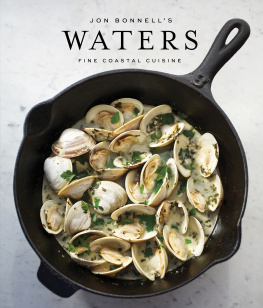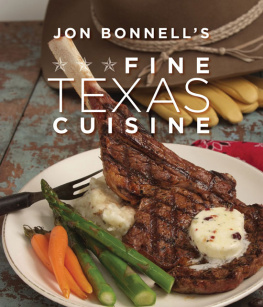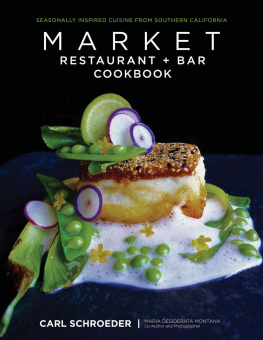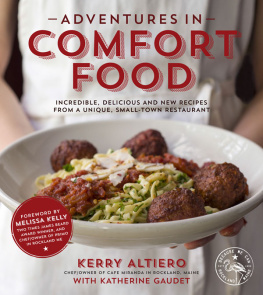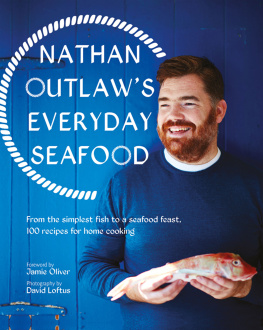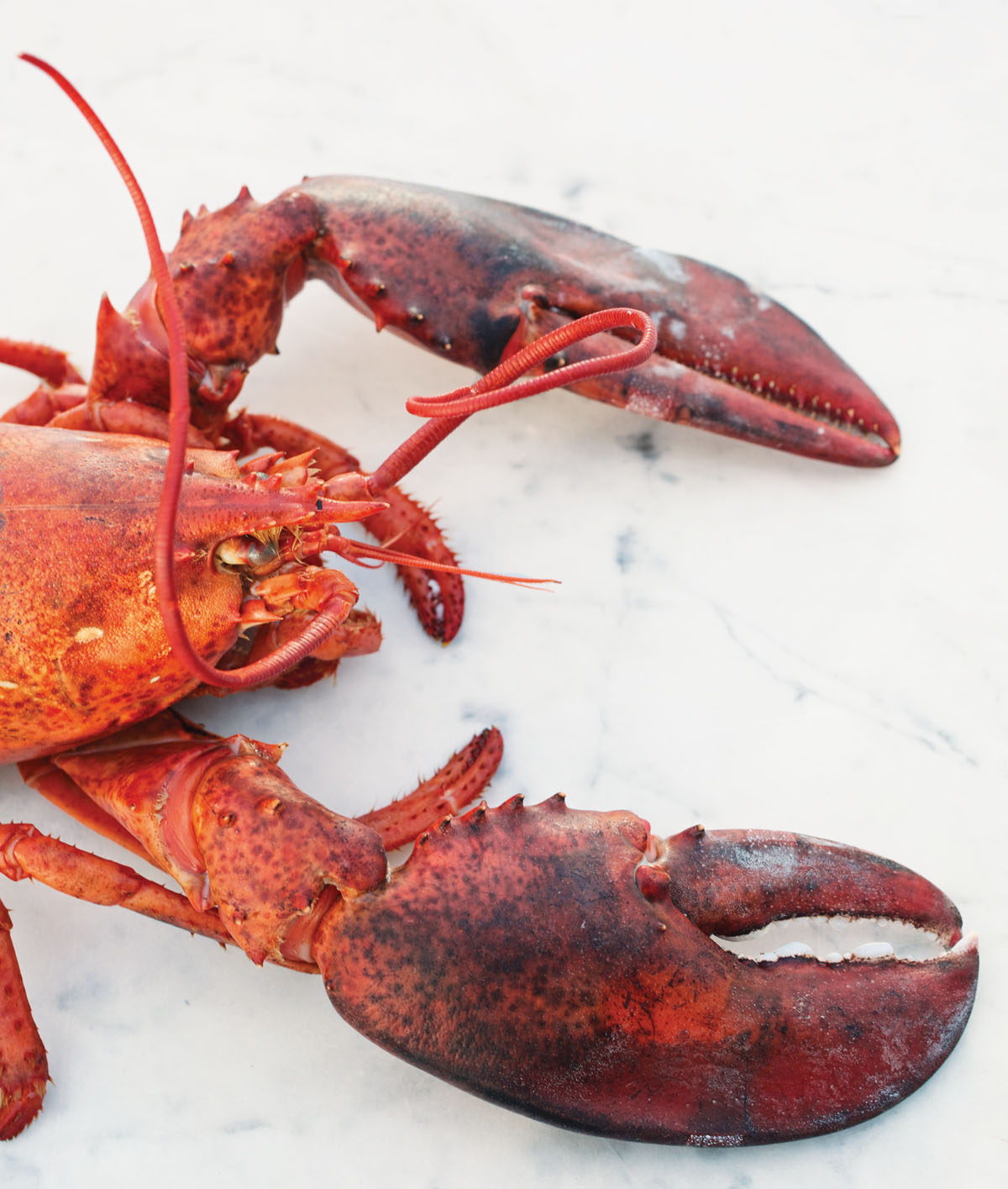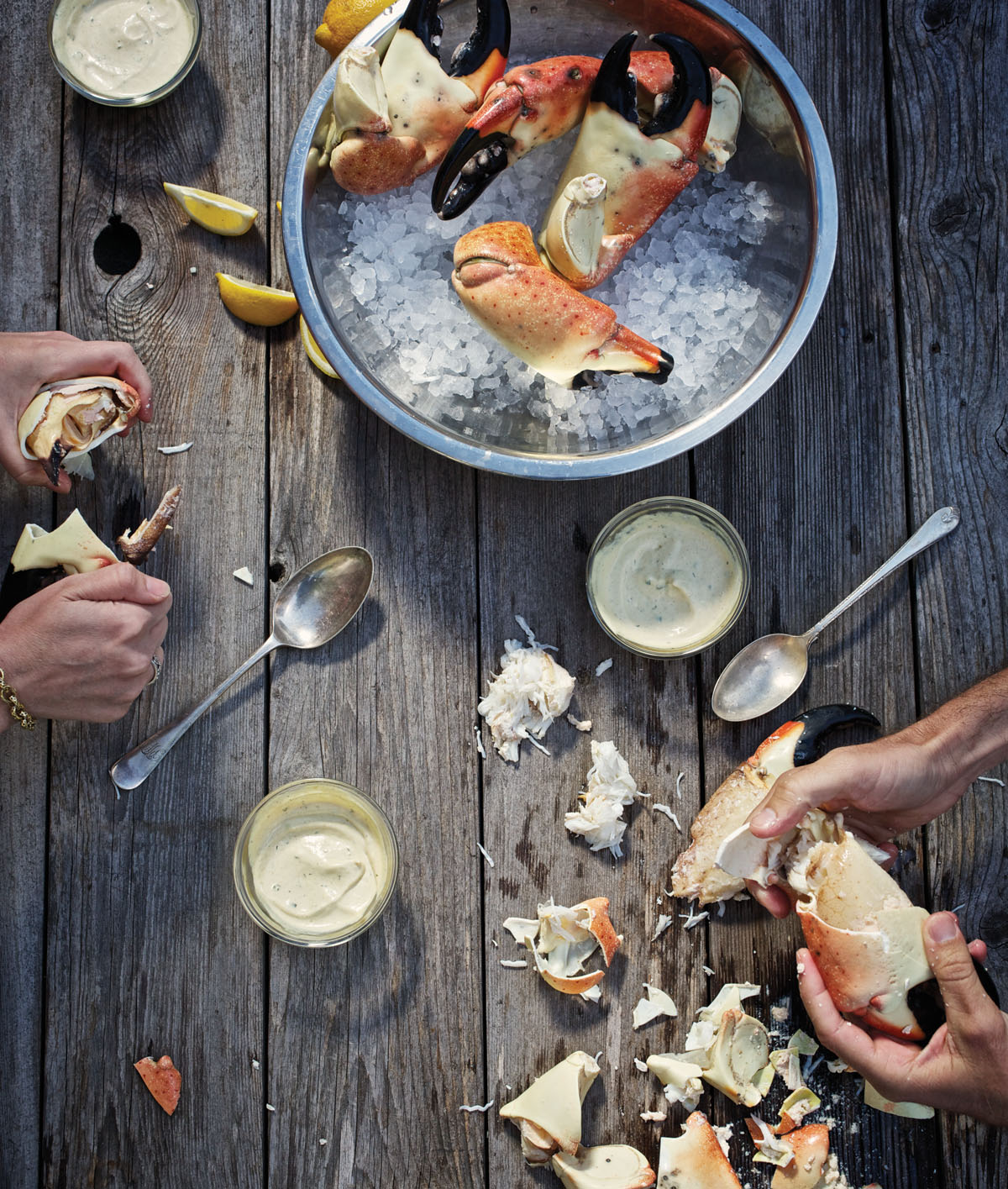Introduction
Fishing has been one of my greatest passions ever since I was a kid, and the allure of the sea is impossible for me to resist. I learned how to clean a trout by age six and have been catching, cleaning and cooking seafood ever since. Whether standing knee-deep in a tumbling mountain stream in search of trout, pulling a top-water plug across the surface of a bass pond or scanning the endless horizon from a flats boat for migrating tarpon, Im constantly either planning the next fishing trip in my head or telling stories from my last one. The waters of the world will always be my playground.
As a chef, I have a true passion for seafood, not only because of my love for the sport of fishing, but because there is always variety. When I order meat, I call the same guys and can buy the same steaks pretty much every day. When I talk to my fish suppliers however, every day is an adventure with a myriad of stories. I love to hear which captain is catching what and whereall the while wishing I could be the one pulling in the lines.
While I use some fish from sustainable aquafarms, I also love the daily challenge of finding out whats fresh and wild. I never ask my suppliers what they have in inventory. Instead, I want to know whats coming in on the boat that might make it to the dock before the FedEx cutoff time. There is simply no substitute for freshness in seafood, so the pursuit of the finest wild fish never ends for a chef.
The diversity that seafood brings to a chef is unmatched in any other category of proteins. Just when I think Ive cooked it all, a new fish catches my attention and I can hardly wait to create a new dish. Usually, once Im tired of seeing any specific fish the season tends to run out and it wont be available until the next year anyway. Thats the beauty of the fish gamealways changing, always a challenge, never a dull moment.
Through all of my years in teaching cooking, Ive found that almost everyone I come across is afraid to cook fish for one reason or another. The seafood display in most grocery stores somehow intimidates customers in a way that the meat display does not. People can fire up the grill and pull off a decent steak with their eyes closed, but hand them a snapper, and some primitive fear wells up inside them at the thought of trying to fillet it, much less cook it. This book will ease the intimidation of working with seafood. The recipesfrom simple to complexare some of my favorites. From the many waters of the world, heres how I like to enjoy the bounty and diversity of fantastic, flippin-fresh seafood.
Wild, Seasonal, Sustainable
Im a sport-fisherman, a chef, multiple-restaurant owner, outdoorsman and conservationist, so this subject is close to my heart. In all of my dealings with fishermen, various seafood purveyors and suppliers across the country, my mission has always been the same: find the highest quality and freshest seafood for my customers while doing my best to support American fishermen and protect wild fisheries.
Without an effort by the general public, the seafood industry could quickly get out of control. Every year, someone in this country goes to jail for fishing and selling out of season; someone changes the name of a fish for a quick buck; some restaurateur serves fish that he/she knows to be in serious population decline. Im not the type for massive regulations or red tape of any kind, but the regulations in the seafood industry are set for a reason. The federal government and individual state governments set quotas, seasons and limits to keep the public safe and the wild fish populations healthy for generations to come.
The best seafood comes from the cleanest and best-maintained waters of the world. I strongly discourage buying seafood items from inexpensive foreign aquafarms when possible, as most of them have found a way to provide the cheapest product possible with no regard for quality, health benefits or environmental impact. Some domestic aquafarming practices are fantastic (like Texas redfish and hybrid striped bass operations), but in general, I tend to avoid fish from foreign countries with too-good-to-be-true prices. Im sure you can guess many of the likely culprits.
Since the seafood game changes with every boat that leaves the dock, it is very difficult to keep an eye on what is happening in the overall market. For anyone wishing to find out the global status of a particular fish population, Ive found a resource that makes this process quite simple. As a professional, I talk to purveyors, fishermen and suppliers on a daily basis, as well as keep up with the industry news from several sources. For the consumer, the website seafoodwatch.org (also a great app for smartphones) is the best resource that I have found. Seafood Watch is kept up to date by the Monterey Bay Aquarium and makes it easy to see which fish is on the sustainable side when you have a choice in what to cook. Know your source, support American fishermen first, celebrate what the waters of the world have to offer and save plenty for the next generation. Thats why I choose wild, seasonal and sustainable seafood every chance I get.
Chefs Favorites
Throughout the book, many of my recipes call for hot sauce and pre-blended spices. I gravitate towards several favorite brands that give distinctive flavors and complexity to my dishes.
For hot sauce, Crystal is my favorite because it has just the right balance of acidity, heat and salt. While some hot sauce brands lend just heat, Crystal is mild and flavorful enough to use plenty without overpowering a dish. I recommend that you give Crystal a try, but if you have a brand that suits you better, feel free to substitute it in any recipes listed here.
Texas Red Dirt Rubs and Waters Bay Blend are my own brands of dry spice mixes. The Red Dirt line includes a Southwestern Blend, a Barbecue Blend and a Creole Blend. You can purchase any of the Red Dirt Rubs at bonnellstexas.com, or Im happy to share the recipe for any of these blends as well. Simply send an email to bonnellstexas.com and Ill return the recipe in Word format. There are many different spice mixes on the market that can be substituted in a pinch, but most are very heavy on the salt and none will produce the same great results we have produced at my restaurants and adapted specifically for these recipes.
There are also many different brands of chile powder on the market, but my go-to brand is always Penderys because they use the best-quality chiles, no fillers and have such a great variety to choose from. I normally use their Bull Canyon blend, but El Rey, Fort Worth Blend and New Mexico Red are all great blends as well. Penderys also adds a heat indicator on each blend to let you know the level of spice to expect, which I really like.

